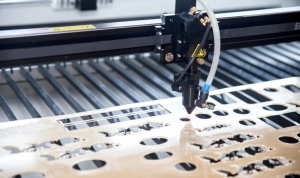please click here:
https://www.svegaoutdoor.com/fixed-blades.html
Introduction
When it comes to edged tools that combine form, function and a hint of martial mystique, the fixed‑blade karambit stands out. Known for its dramatic curve, ring‑handled design and unique heritage, the karambit has evolved from an agricultural implement to a specialist fixed‑blade tool and self‑defense accessory. In this blog you will explore the history, design, materials, use‑cases, legal and safety considerations of the fixed blade karambit knife, and compare it to other knife styles so you can decide if it belongs in your kit.
Origins and Evolution of the Karambit
The karambit originated in the Southeast Asian archipelago, particularly among the Minangkabau people of West Sumatra. According to tradition, its curved shape was inspired by a tiger's claw. Initially used as a small agricultural tool — for cutting roots, harvesting rice, or raking — the design gradually evolved into a weaponised form.
As trade and martial arts practices spread, the karambit's form adapted: the curve became steeper, finger‑rings were added, and it moved from hidden use to deliberate self‑defense and tactical roles. Meanwhile modern fixed‑blade karambits bridge traditional heritage and contemporary design innovation.
Distinctive Features of a Fixed Blade Karambit Knife
A “fixed blade karambit” refers to a karambit where the blade is permanently fixed (i.e., no folding mechanism) which brings certain advantages and also considerations. Key characteristics include:
-
Curved blade profile: The sharp curve creates slicing and hooking motions that differ from straight blades.
-
Finger ring / retention ring: At the pommel often sits a ring that the user passes a finger through, enhancing retention, control and deployment possibilities.
-
Fixed‑blade construction: Without hinges or folding parts, fixed models offer increased structural strength and simplicity.
-
Full tang or robust mounting: To maximize durability, many fixed models are full tang (the blade‑steel extends through the handle) or otherwise solidly built.
-
Sheath & carry: Because of the curve, carry and draw require purpose‑built sheaths, often horizontal or harness carry, rather than simple pocket carry.
When selecting one, pay attention to materials (steel type, handle material), ergonomics (grip size, ring comfort), and intended use (EDC, self‑defense, outdoor tasks).
Fixed Blade Karambit versus Other Knife Styles
To help clarify where fixed‑blade karambits stand relative to more common styles, the following comparison table outlines typical differences.
| Feature | Fixed Blade Karambit | Straight Fixed Blade Knife | Folding Karambit / Folding Knife |
|---|---|---|---|
| Blade shape | Deep curve, hook‑style slicing/hooking | Straight or modestly curved for general use | Similar curved shape but with pivot mechanism |
| Retention & ring | Finger ring enhances security, retention | Typically no ring, simpler handle | May include ring, but hinge adds complexity |
| Structural strength | Very strong (no pivot) | Strong, often full tang | Less strong at pivot, more moving parts |
| Carry/Accessibility | Requires purpose‑sheath, draw technique | Often easier draw from belt or sheath | Pocket or clip carry possible, but slower draw |
| Primary intended use | Close‑quarters, tactical, self‑defense | Utility, hunting, general outdoor tasks | Everyday carry, multi‑purpose, tactical |
| Learning curve | Higher: unique draw/handling required | Lower: familiar knife ergonomics | Moderate: folding mechanism adds dimension |
From this table you can see that the fixed‑blade karambit occupies a more specialised niche. If you simply need a general outdoor knife, a straight fixed blade may suffice; if you want deep slicing and hooking capability with high retention then a fixed karambit could be ideal.
Choosing a High‑Quality Fixed Blade Karambit
Here are some criteria to weigh when selecting a fixed blade karambit:
Steel quality and edge retention: The steel used must resist wear, keep a sharp edge and hold up under slicing and hooking stresses. Reviews suggest that steel quality remains a key differentiator among karambits.
Handle ergonomics and retention ring comfort: The finger ring should accommodate your finger size comfortably and the handle scale or grip should be textured or contoured to avoid slip.
Sheath design and carry suitability: Because of the curved blade, the sheath must allow safe retention and draw. For fixed models check whether carry is horizontal/vertical and how fast deployment is.
Construction quality (full tang / one‑piece): For durability, fixed blade karambits with full tang design or one‑piece steel handle are superior.
Intended use and legality: Understanding your local laws is imperative. In some jurisdictions, curved fixed blades may face restrictions. Also, match the knife to your use-case: tactical, self‑defense, outdoor utility, etc. As one supplier notes, “fixed blade knives with sheath… your best source for durable build.”
Practical Uses and Considerations for the Fixed Blade Karambit
Self‑defense and tactical use: The curved geometry of the karambit allows slicing, hooking, retention via the ring and rapid draw in close‑quarters. Historically the karambit became weaponised in the Southeast Asian martial arts. (
Outdoor and utility tasks: Though less common than straight blades for general utility, kitchen, bushcraft or survival use, some fixed‑blade karambits still perform well. Their hooking shape can excel in rope cutting, gutting tasks or slit‑cuts. Suppliers of “fix blade karambit knives” mention outdoor usage like gutting, fishing, camping alongside self‑defense.
Training and familiarity: Because the draw, grip and movement differ from conventional knives, users should invest time in training with the fixed karambit to avoid misuse or self‑injury.
Legal and carry implications: Carry laws vary widely. A curved fixed blade with ring may attract attention from law enforcement or be prohibited in some public carry regulations. The UK supplier notes legal carry of karambits requires “reasonable excuse”.
Maintenance: The curved blade may require special sharpening techniques. Using standard straight‑blade methods may not effectively reach the entire edge. Materials used (steel, handle) affect corrosion, durability, ergonomics.
When a Fixed Blade Karambit Might Not Be the Right Choice
While compelling, a fixed blade karambit is not always the optimal solution:
-
If you need a general‑purpose outdoor tool: straight fixed blade knives often give more versatile cuts, chopping, batoning ability.
-
If portability and discreet carry matter: fixed models may be larger or harder to conceal compared to folding knives.
-
If you are on a tight budget: some curved specialist knives cost more for similar build quality.
-
If you have large hands and find the ring handle cramped or restrictive: ensure the model selected fits your ergonomics.
-
If you are not willing to invest training time: Using the ring and curved motion effectively and safely takes practise.
Popular Models and Market Landscape
The market for fixed blade karambits is growing. For example, UK‑based retailers list “Fixed Blade Karambit Knives” as a dedicated category and note its rise in interest both for traditional roots and modern tactical appeal. Reviewers point out that even among karambits, differences in steel, handle design, carry scheme and ergonomics are meaningful.
When shopping, you may find options ranging from budget stainless steel models to premium tool‑steel constructions. As always, confirm hallmark fabrication standards, retention ring size, fixed‑blade robustness, and sheath quality.
Safety Tips and Responsible Use
-
Always store the knife safely in its sheath when not in use.
-
Practice drawing, grip transitions, and retention (ring usage) in a safe environment until comfortable.
-
Keep the blade sharp: a dull curved blade is more dangerous than a sharp one because of increased force needed and potential slip.
-
Consider local law: even ownership can impose responsibilities. If you intend to carry, know what constitutes “reasonable excuse”.
-
Use for the intended purpose; do not rely on a curved design for heavy chopping or prying tasks for which it is not built.
-
Maintain the handle and ring area: because you rely on fingers through the ring, ensure the ring isn't cracked or worn.
Final Thoughts
The fixed blade karambit knife brings together a rich heritage, distinctive form and specialised function. If you're drawn to a blade that offers hooking slicing power, high retention via ring handle, and a fixed‑blade strength that folding designs can't match, then this style may suit you. But it also demands respect: the unique ergonomics and carry options require thoughtful selection, training and awareness of laws. Use the comparisons, criteria and insights above to decide whether this tool aligns with your needs rather than simply buying for novelty.
Frequently Asked Questions
Q: Are fixed blade karambits legal to carry in the UK?
A: Legal ownership is typically permitted, but carrying one in public without a “reasonable excuse” may breach knife laws. Always check local regulation and context (e.g., belt carry versus pocket).
Q: What is the advantage of a fixed blade over a folding karambit?
A: Fixed blades have no moving parts or hinges, which means greater structural integrity, simpler maintenance and often faster deployment. However folding models may offer greater portability.
Q: How do I sharpen a curved karambit blade?
A: It's advisable to use a sharpening rod or tapered file that follows the radius of the curve rather than a flat bench stone alone. Proper angle maintenance through the curve is critical.
Q: Is a karambit good for survival or bushcraft tasks?
A: It can serve well in some niche roles — slicing, rope cutting, utility tasks — but compared to straight fixed blades it may not excel at tasks like batoning, chopping wood or general carving. Match the tool to its strongest capabilities.
Q: Does the finger ring make a big difference?
A: Yes — the ring enhances retention (especially in draw and close quarters), provides a pivot point for the handle in manipulations, and helps secure the knife in hand under dynamic movement. But fit and comfort of that ring to your hand size matters a lot.
Summary
The fixed blade karambit knife melds Southeast Asian heritage with modern tactical design. With its curved blade and retention ring, it offers unique slicing and hooking capabilities. Ideal for specialised use, it demands careful selection, understanding of carry laws and dedicated training for safe, effective deployment.






